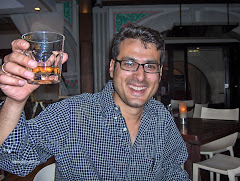A 2011 trip to China remembered as Modi becomes PM. In the hope that NaMo will make Indians proud
Bob wasn’t particularly happy to be in Beijing but the “pay is awesome”, it is “tax-free” and he hadn’t really “worked on his exit strategy”. I met him a day after landing in Beijing at a bar in the diplomatic area. He was a former Marine, slightly drunk, missing his corned beef and brisket, and fairly liberal with the F word. I had to talk to him. “You know these f****** third world countries, don’t you? It’s too hot, people are always hungry and there are mosquitoes all around.” He was slightly embarrassed when I told him where I was from. “I’d love to go to India, man. I’ve heard so much about it.” Right. But what about China? “I just can’t believe how they got this rich. They own A8s and Mercs and Beemers. They’ve got knock-offs that look just like the real thing. But I really get scared when I see jaywalkers on the road man. These guys may be rich but they don’t know how to walk. Or drive.”
Bob was right. From the time I landed in Beijing, all I could see was VW Passats, A8s, BMW 7 series, Porsches and Mercedes. Determined to find out how the Chinese do things differently from us, I zeroed in on a bar where nearly all the diplomats in Beijing hung out.
That’s where I met Will on the first day. He had just moved to Beijing from Mumbai where he had set up the kitchen for a five-star hotel. Will was bald, 6’2”, and built like a truck. He shook my hand when his wife told him I was from India. “You guys put my friend Shahid Balwa in jail.” I nearly ducked as I thought he would clobber me for what my government had done to an accused in the 2G scam. “All projects are on hold. People are unemployed. Entrepreneurs don’t know what do with the projects they’ve started. You should punish the corrupt but this takes the steam off your growth. How will you play catch-up with China?”
Over the next 15 days or so that would be the first and only time when I would hear India and China mentioned in the same breath. Talks about an Asian superpower would generally veer around Thailand, South Korea and Japan. And China, of course.
Not without a reason though. Beijing has announced its arrival with skyscrapers, expressways, bullet trains, and a whole lot of really expensive cars being driven around by guys who look barely out of their teens. “And it’s really safe. I can’t think of doing things like these back home in the States,” said Brendan, a soft-spoken hotel management graduate from New Orleans who runs two restaurants in Beijing. By “things” he meant riding his bike back home in the dead of the night or walking the streets without the fear of being mugged. “But if you really want to understand China better you must head out of Beijing,” he told me.
My Chinese was limited to Ni Hao (hello) and xie xie (thank you) so any thought of conversing with locals gave me the jitters. I decided to take the bullet train to Tianjin, a port city around 160 km from Beijing. The train touched a top speed of 332 kmph and covered the distance in 30 minutes flat. I kept my eyes peeled to check if what Paul Theroux had said in Riding The Iron Rooster still rang true. It did. In the fields along the tracks, I could not see a single tree. The Chinese farmer makes use of every available inch of land, Theroux had written. I was hoping to discover another world in Tianjin but was a little disappointed. The skyscraper-expressway-expensive car story continued. An antiques market in by the Hai He river in Tianjin competes with a modern square that the Chinese are building for tourists. Holland’s Tulips compete with Paulander and Guinness in this marketplace, complete with cuisines from around the world, and picket fences.
I returned to Beijing even more wide-eyed than I left. Back in the bar in the diplomatic area I got into an argument with an American journalist. “Bullshit. Bullshit,” he said when I suggested that our middle class was a better market than China’s. After all, nearly 50 per cent of our population would be under-25 by 2015, so we are better placed for the future, I argued. Another round of “bullshit”. And then he asked: “You guys know what to do in bed. You guys wrote the Kamasutra. Then how come Bollywood can never move beyond flowers?” Before I could answer, he shot another one: “When will you guys solve your caste problem? You guys are really smart. Then how come you are unable to overtake China?”
There was only one way to salvage my pride. I had to talk to a local. A few days later I met a researcher working for a TV station. He started by asking me what I thought about China. “You guys seem to be on a mission. You are testing the new bullet train, building skyscrapers faster than we uncover our scams, manufacturing for the world…” “Tourists come and talk about development, our infrastructure, high-rise buildings and bullet trains,” he said, cutting me short. “But you get to vote. We don't.” Now if only Modi can bridge the gap between India and China.




